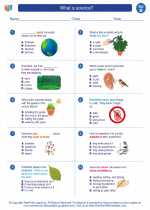Magnetism
Magnetism is a force of attraction or repulsion that acts at a distance. It is caused by the motion of electric charges. The most familiar example of magnetism is the magnetic field generated by an electrically charged object, such as a bar magnet.
Magnetic Materials
Materials that are attracted to magnets are known as ferromagnetic materials. These include iron, nickel, and cobalt. Other materials, such as aluminum and copper, are not attracted to magnets and are known as non-magnetic materials.
Magnetic Poles
Every magnet has two poles: a north pole and a south pole. Like poles repel each other, while opposite poles attract each other.
Magnetic Field
A magnetic field is the area around a magnet where its magnetic force is exerted. The magnetic field is strongest at the poles of the magnet and its force decreases as you move away from the magnet.
Uses of Magnets
Magnets have a wide range of uses in everyday life, from compasses for navigation to MRI machines in medical imaging. They are also used in electric motors, generators, and various electronic devices.
Study Guide
- What is magnetism?
- Give an example of a ferromagnetic material.
- What are the two poles of a magnet?
- Explain the concept of a magnetic field.
- Name one everyday use of magnets.
[Magnetism] Related Worksheets and Study Guides:
.◂Science Worksheets and Study Guides Second Grade. What is science?

 Worksheet/Answer key
Worksheet/Answer key
 Worksheet/Answer key
Worksheet/Answer key
 Worksheet/Answer key
Worksheet/Answer key
 Vocabulary/Answer key
Vocabulary/Answer key
